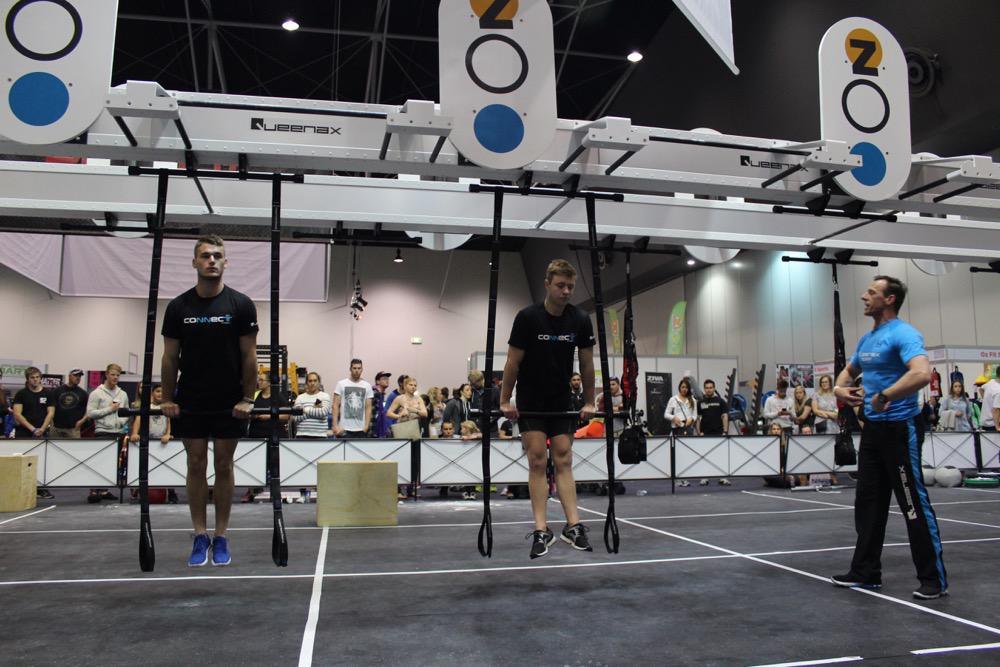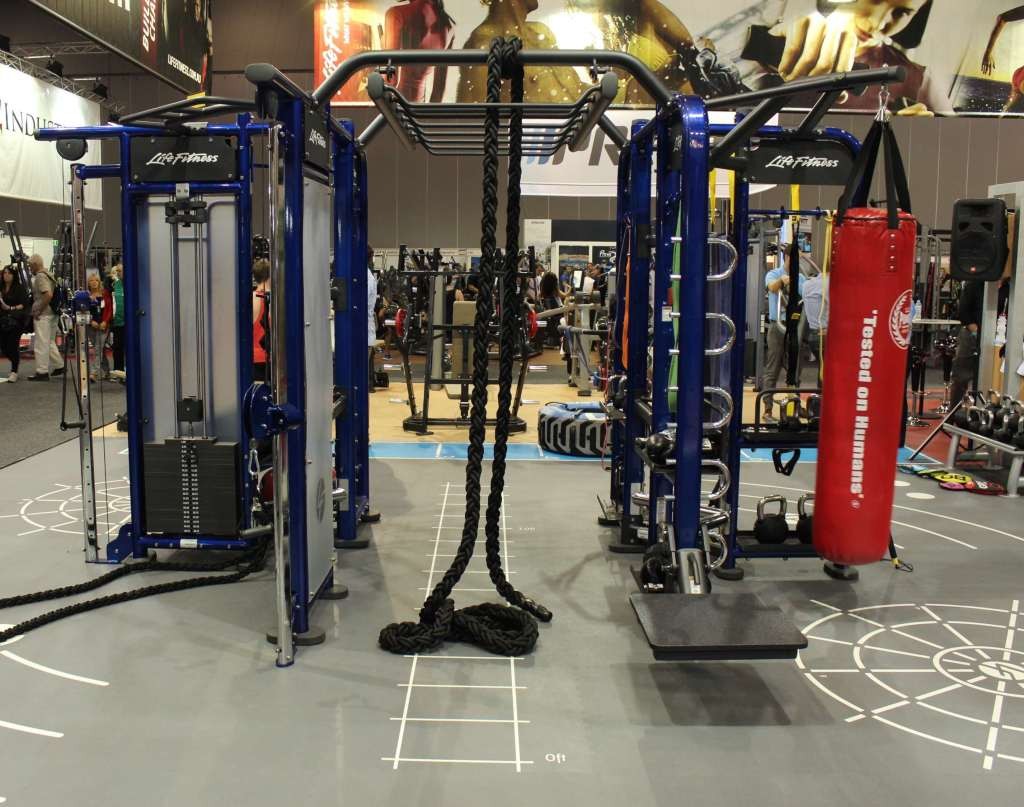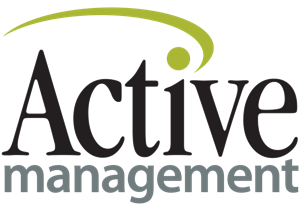Why Functional Training Rigs Should be on Every Gym Managers Wish List
Before joining the blogosphere, I was a gym manager. Around 2004, I bought the gym’s first DAP (Dual Adjustable Pulley) for the purpose of ‘functional training’. It was an exciting time in the industry! All of our trainers were heading off to do swiss ball courses and the term ‘Functional Training’ was quickly becoming abused within the ranks of personal trainer’s. Basically all the signs of a ‘new trend’ were falling neatly into place!
Fast forward to 2015, and the world of functional training looks very different. Gyms of all sizes are now allocating valuable gym floor space for functional use. In the last few months, I have visited a number of gyms that have invested in purpose built rigs and designed exciting new programs to deliver; under, on, above and around the rig.
So why are budget gyms, through to boutiques, right up to premium gyms, striving to cash in on functional training via the installation of rigs?
Marcus Bondi whom I regard as the king of functional training, not to mention a dual Guinness World Record holder for 5m Rope Climb & 18kg Weighted Chin-ups, (www.marcusbondi.com) had this to say:
Functional training is not the ‘latest thing’ in fitness training; it’s actually the ‘oldest thing’ in fitness training! “Compound exercise’ strength and fitness training has been a proven paradigm since ancient Grecian Olympians climbed ropes! The greatest aspect of a functional training rig is that incredibly effective compound exercises can be performed in order to maximise total body strength and endurance. Compound training ensures that large (& small) muscle groups must work in unison, ensuring commensurate development/exercise of muscles, joints, ligaments and tendons – and thus minimising injury and optimising physical progress! Every serious gym needs a functional training rig – it’s the first thing I look for when I enter any gym!
In my opinion, the reason why functional training rigs should be on every gym manager’s wish list is simple. Functional training makes sense to the masses. It is an easy sell to an increasingly fitness savvy customer, who seek out fitness experiences to invest their time and dollars in.
I think that we have accepted how rapidly technology and innovation have changed the way we live. We also acknowledge that, with advancement, some sacrifices have been made, particularly in how much we move and sit. In the same tone, Functional Training is often tied to thoughts of our forefathers and the general belief that they moved better, more often and ate foods (by default), that some of us now pay a small fortune for, under the label of ‘organic’.
So functional training in some ways, is getting back in touch with who we were, the ‘active generations’. It is appealing to a wide variety of gym goers and it can be done as an individual, with a trainer, or in a group fitness setting.
I also asked manufacturers of functional training equipment for their perspective on the trend. Here is what two of them said:

‘The Bridge’ Demonstration with Ross Barbour at the Perth Fitness Expo 2015
Ross Barber: General Manager of Queenax Australasia said:
Functional training has become more mainstream due in large part to the popularity of boutique studios and CrossFit that offer specialized programming and personalized small group coaching. IHRSA data shows that in the most growth in the personal training sector came from small group training in 2014, and this trend is likely to continue due to the lower cost for the exerciser and the greater income per hour for the trainer and club operator.
Functional training rigs are an excellent way to offer scalable and dynamic training options for exercisers of all fitness and ability levels. These rigs incorporate anchor points and storage for suspension, tubing-based resistance systems and more. They transform training environments into functional playgrounds. However, open floor space is also important to operators and trainers.
When selecting a rig, look for a system that expands the training space, rather than dominating it. Floor space is critical for training lifts, kettle bells, battle ropes, sleds, and other body weight and resistance methods. At the end of the day, a functional rig should enhance and expand a gym’s training services in order help operators recoup their investment.

The Life Fitness Synrgy 360 at the Australian Fitness And Health Expo 2014
Aaron Oman, Commercial Sales Manager for Life Fitness Australia said:
When you look at fitness trends and changes in our industry, we often see a correlation between Australia and the United States. One of the big changes in recent years in the U.S., has been the growth of the boutique section of the fitness market (P.T. Studios, CrossFit boxes, Orange Theory facilities, F45 studios, Soul Cycle clubs, etc), offering this type of training, in a smaller setting.
The changing landscape of the industry, has meant many commercial clubs have reviewed their facilities and added small group training areas and/or dedicated functional training zones; to increasing their programming options. Generally these areas include Crossfit style cells, or more glamorous Group Training Stations (i.e. The Life Fitness Synrgy 360).
One of the reasons clubs are rushing to include these rigs is their desire to pack as much as they can into their space, without necessarily removing stations from the gym floor. The rigs offer a huge amount of versatility, particularly when it’s combined with a good trainer, and the trainers tend to love using a blank canvas in their PT sessions.
Additionally members tend to be more educated and more experienced these days, so seeing a blank rig or a large functional station isn’t as off-putting as it may have once been; meaning the units don’t become white elephants on the floor.
Finally, and most importantly, functional training rigs have given gym operators an invigorated opportunity to reach out, influence and better serve gym member’s, who are actively seeking out unique and dynamic fitness experiences, that will keep them motivated on their path to reaching their goals.
Do you run ‘functional training’ services at your gym? I’d love to hear your perspective!
Til next month
Nate
Head Barista
Fitness Equipment Cafe
Guest Blogger: Nate Effeney from Fitness Equipment Cafe. Fitness Equipment Cafe’s mission is to be the: #1 source of independent fitness equipment expertise – globally.

Whether or not clubs install functional training rigs, it is actually the programming, the marketing and business systems that create the profits (return on investment). If you are a club owner or manager and want to see how to maximise your financial return per square metre of functional training space, check our http://www.tribeteamtraining.com. Some clubs using TRIBE are delivering over 50 PREPAID SGT sessions per week in space from 60 to 120 square metres.
[…] This month Fitness Equipment Cafe was asked to become a regular guest writer for the Active Management website and e-newsletter. With a blanket topic of ‘fitness equipment’, I contemplated long and hard on the subject of my first piece. Finally, I decided on functional training rigs. I have watched this space evolve quite steadily over the past 10-15 years, and the last 2-3 years have been super exciting with some of the big players such as Life Fitness, International Fitness, Queenax and Matrix (to name a few) stepping up and designing their own very unique versions of rigs. You can read the post on Active Management’s website here. […]